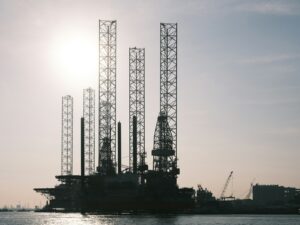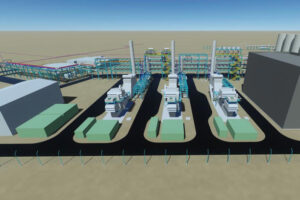Landmark decision has moved fracking forward but it’s only a small step
After a five-year hiatus, the fracking industry looks to be restarting following the decision by North Yorkshire County Council to approve an application to extract shale gas at a site near Kirby Misperton in Ryedale.
The application by Third Energy was submitted to the council last year. After months of consultation, the council’s planning officer, Vicky Perkin issued her recommendation that Northallerton District Council should approve the plans earlier this month. A consultation on the plans received 4,000 representations from objectors.
In spite of this, her report noted ‘national policy support for the development of a shale gas industry in this country and this is an important material consideration’.
Can we now argue that this vote in favour takes Britain to the verge of finally kicking off a shale gas industry that has suffered setbacks and delays despite the enthusiastic support of government?
Third Energy wants to frack a two-mile deep well called KM8 that it drilled in 2013, in an operation that it says would last about eight weeks in total. It claims the work would be less intrusive, with less noise and fewer lorries than the drilling of the well itself.
Andy Mortimer, Third Energy’s subsurface director, told the committee that fracking at Kirby Misperton was ‘highly unlikely to cause any sort of earth tremor’, describing the area as ‘seismically benign’.
He said any faults discovered in the area were about 250 million years old but added that KM8 had been drilled a ‘safe distance’ away from these.
He said the company would operate a safety system that would halt operations if a seismic event measuring above 0.5 on the Richter Scale (an event rarely felt but which can be recorded seismographs) occurred, adding that ‘trains cause seismic signals several orders of magnitude greater than our proposed threshold’.
Fracking – the hydrogeological issues
Seismic events catch the media headlines, but a key issue is the leakage of chemicals used in fracking into surface water and groundwater systems. Further work needs to be undertaken to understand how the ongoing integrity of well shafts can be protected.
ESI helped co-author a study into the risk for the European Commission in 2012. It highlighted that, if not managed adequately, there is the potential for a high risk of surface and groundwater contamination at various stages of the well-pad construction, hydraulic fracturing and gas production
processes, as well as during abandonment. However, these risks can be reduced to acceptable levels through the proper management and regulation.
As well as the introduced fluids and the released gas, on some fracking sites, drilling and flow-back fluid can contain low levels of naturally occurring radioactive minerals such as radium, similar to those found in granite rock. These occur naturally at depth but can be brought to the surface entrained with the fluids in the well.
The fracking process itself requires large quantities of water, which if not accessible from the site, must be transported to the location. Drawing from nearby resources would be more economic, but the sheer volume of water needed (two to 10 million gallons in some of the deeper USA wells) suggests availability may be an issue dependent on the area and scale of development. In the south of England, reliance solely on groundwater chalk aquifers would render this very difficult.
A catalyst for the industry?
Fracking companies already have rights to apply to develop over 7,300 square miles across the UK, with a further 6,000 square miles currently allocated in the licensed blocks offered by the government at the end of 2015. Some of that is effectively off-limits after Scotland and Wales imposed temporary bans on fracking.
This creates the potential for thousands of sites over time. However, each company will have to apply for permission at every site and secure planning permission and the relevant environmental permits.
So will this decision mark the start of a wave of applications and permitting?
Even though Third Energy has won planning permission, they acknowledge any appeal lodged by anti-fracking campaigners could further delay the process. In any case, it will take several months to carry out final preparations and secure sign-off from Amber Rudd, the energy secretary, before fracking can get underway.
Ministers have expressed frustration at the pace of planning applications and had threatened to call in applications that took longer than 16 weeks. They failed to do this with the well in North Yorkshire, even though some of the statutory consultees failed to respond in time.
There is also the potential delay of ensuring timely environmental permits for each site. Many believe in the primacy of the planning process which should deal with all relevant environmental concerns. The permitting process is to agree the details of implementation rather than the principle. What is crucial here is that operators engage with experienced environmental consultants who have established links with regulators, helping to avoid further delays.
The upshot is that while this moves the industry forward to operate, it is for one site only and the roll out could take many years to realise yet.
Photo by David Holt London 















